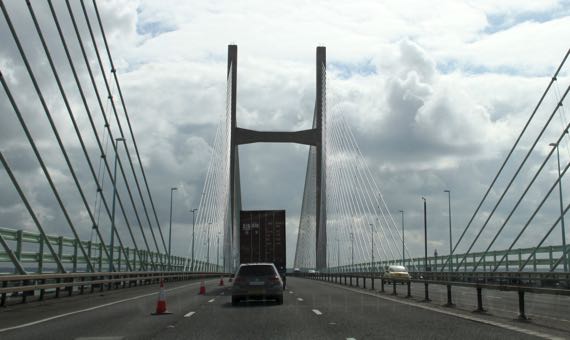
The Severn Bridge we took into Wales opened in 1966. I bet traffic patterns changed immensely, even with the substantial toll. In 1996, the Second Severn Crossing opened; set a bit downstream, it especially carries vehicles flowing to/from southwest Wales, including Cardiff and Swansea. The powers-that-be had the two combined into a single concession to share toll collection and debt repayment. So, we entered Wales on the old bridge (not that old), and left on the new bridge. Bye-bye Wales, we are London-bound with two Roman stops en route.
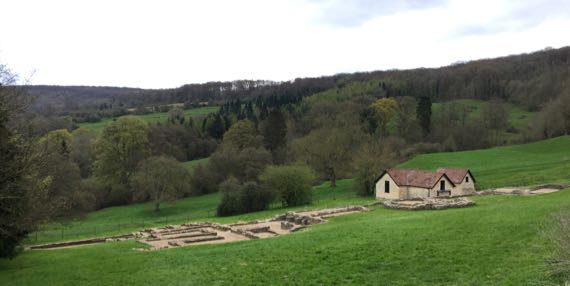
Discovered in 1818, this modest Roman villa commanded the upper area of a smallish drainage, and was built into a hill. Construction began in the AD 250s, and the place was abandoned in the early 400s, when the Roman military pulled out of Britannia. The mosaics are under the roof. The place was ours to visit, quiet except for distant pheasant squawks and generic country sounds.
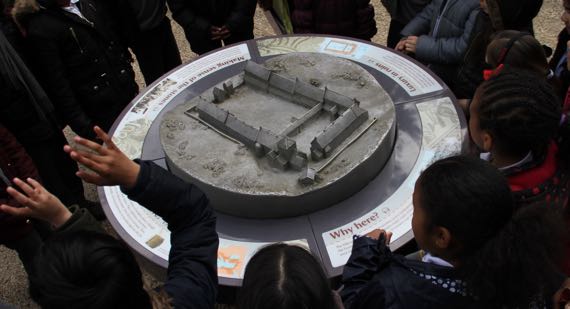
Chedworth Roman Villa, on the other hand, was bustling with docents and vendors, school groups, walkers, and generic tourists. The complex grew over about the same period as the previous villa, and also was set into a hill’s upper slope. This complex became much larger, and much more architecturally elaborate. It ultimately had two bath areas, for example. In this view of the metal maquette, uphill is to the lower right, with the lower, larger courtyard planted into a garden that opens to the upper left (actually east) and views of the valley.

This was among the earliest mosaic floors at Chedworth, along a passageway in the upper “horizontal” bank of rooms that faced the valley (late AD 200s). The earliest construction was up here, three separate buildings that eventually became a single “range” of attached rooms.
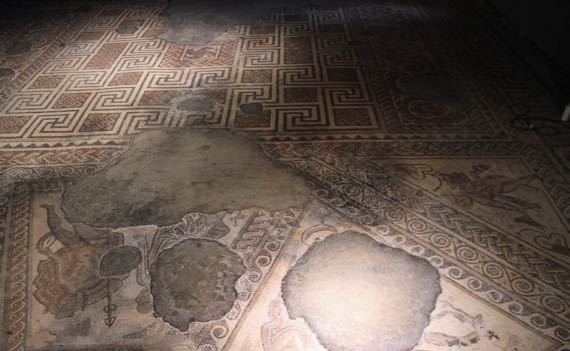
In the early 300s, this elaborate dining room was added, with considerable wealth invested in the floor. This was a typical choice of elite homeowners, as the dining room was the principal location for entertaining (plus the decorative gardens).

Love the mushroom pillars of the hypocaust floor…. It seems to me that more rooms than in a Rome-area Roman villa had heated floors, I’m assuming because they had the water/firewood to make the heat, and because it was colder than Rome here, and this was how elites made living in the colonies more like life at the imperial center, and thus more Roman.
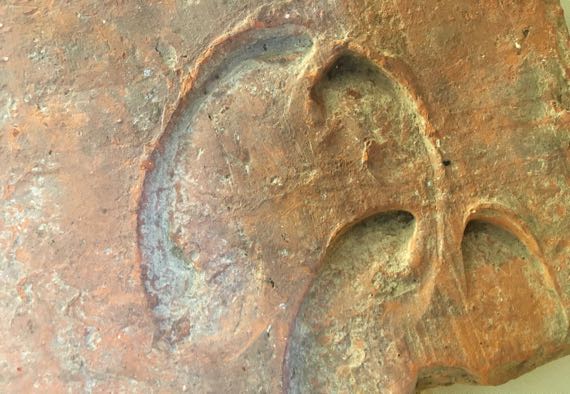
Just one detail from the museum, from the display of impressions in roof tiles. The tiles were made locally, but probably not on the villa property. These are ox-hoof impressions. Other displayed examples were dog, cat, human fingers….
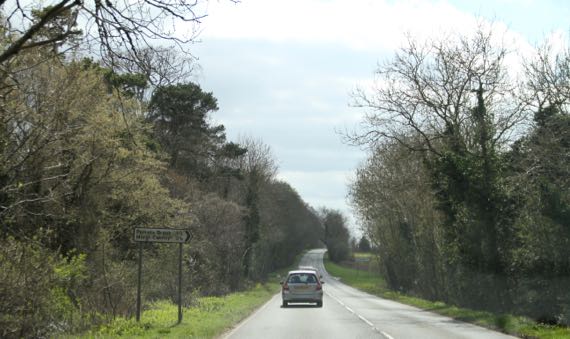
Within ten miles of Chedworth are eleven villas, including Great Whitcombe that we visited earlier today. Chedworth is between two roads that radiate in a northerly direction from Cirencester. We misheard our navigation-voice say that place as Siren-sister (hence today’s title); it’s pretty close. While that sounds like the Roman name, it isn’t; the Roman name was Corinium Dobunnorum. During the time of the villas, Corinium also had many domestic complexes with elaborate mosaic floors and other markers of wealth. Money could be made here, both through agricultural pursuits and through regional and long-distance trade. Anyway, this modern road follows Fosse Way, the Roman route to the NNE out of Corinium. The complete Fosse Way went NNE from Exeter to Lincoln (today’s names).
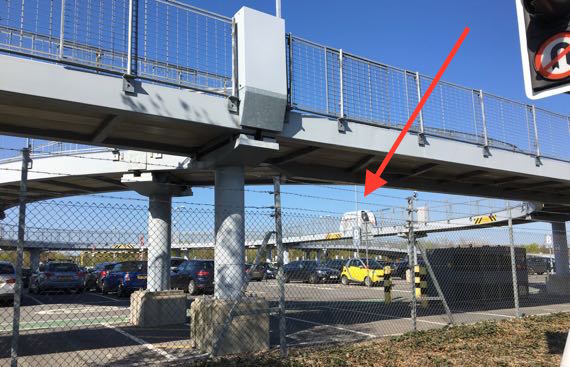
En route around Heathrow’s runways to the car rental return, we again noticed these little human transporters on a rail. I only got this one crappy picture, at a distance. These self-driving units are called pods, and the service is aimed at business travelers, linking a special parking lot with Terminal 5. It opened in 2011.
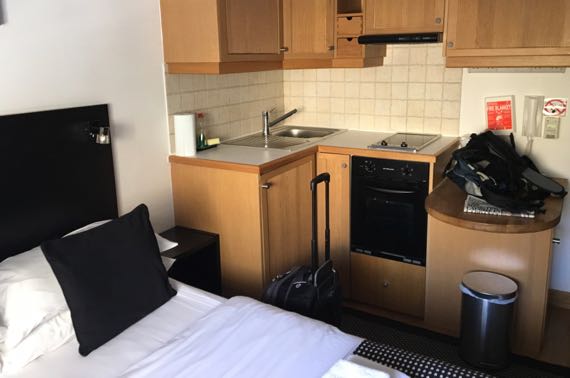
Our London home is an Ikea special. The folding chairs are actually from Ikea. If you have long arms, you can almost make coffee from the bed. We have a window with a park view and wifi; life is good.
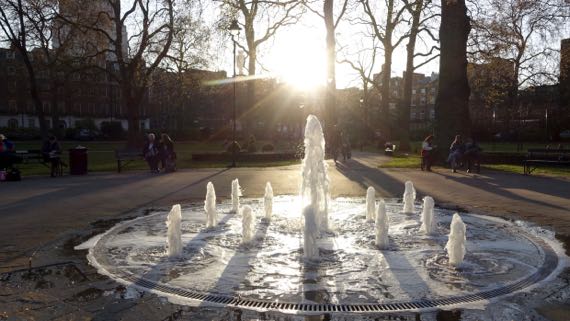
We took off for the Thames and points en route. We thought we might take the train back, but hoofed it the whole evening. Here’s a fountain in a nearby park (not our window-park). We saw several groups sitting on the grass enjoying an early meal/snack.
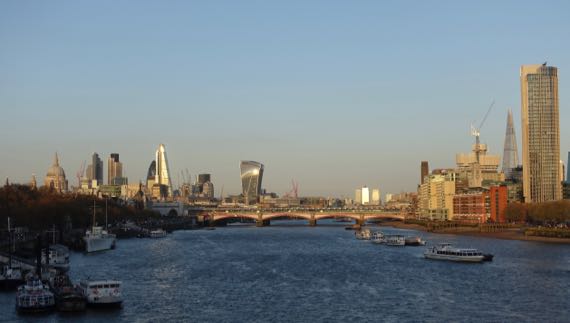
We saw the Thames in the last of the day’s light. And heard Big Ben chime at 8pm.
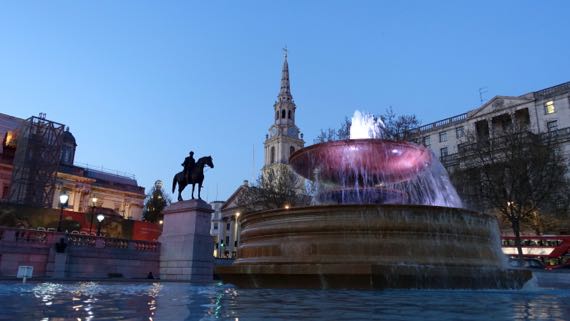
Turning north, we entered Trafalgar Square. Fountains. Spires. Blocky buildings. Man-on-horse statues.
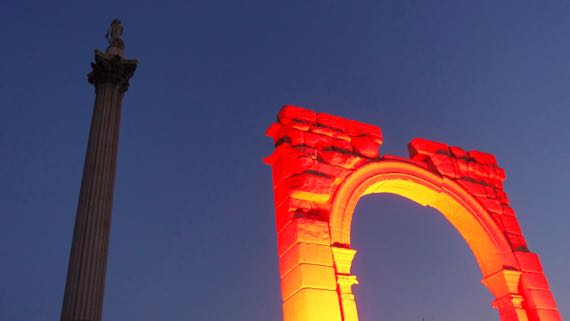
And…Admiral Nelson towering over a red glowing Roman arch. Art. The Guardian says it’s a Carrara marble replica of Palmyra’s Arch of Triumph, recently destroyed by Daesh/Isis. It is here for three days and gorgeously lit.